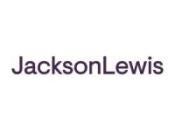This is the third of a new series of articles titled “The Bests.” This series focuses on Best Interest and Best Practices. Those topics give me flexibility to discuss a range of subjects that affect both service providers, including advisors, and plan sponsors, including 401(k) committees.
My first two posts of “The Bests” were about Best Interest for advisors. In this article, I am shifting to Best Practices for plan sponsors. Keep in mind that a Best Practice is above and beyond the legal requirements. Best Practices are not mandated; they are elected.
While the most obvious Best Practices are automatic enrollment and automatic deferral increases, I want to start with the projection of retirement income for participants. That’s partially because it is in a current legislative proposal—in the Retirement Enhancement and Savings Act (RESA), and also because, in my opinion, it doesn’t receive the attention that it deserves.
Under current rules, participants in 401(k) plans receive quarterly reports of the balances and the investments in their accounts. While that is important information, it is only part of the story. Let me explain what I mean.
An account balance is a statement of wealth. It is a snapshot of how much money is in the participant’s account at a given point in time. However, it does not provide the most important information, which is whether the participant is on course to have a financially secure retirement. To provide that information, participants need projections of retirement income and “gap analysis.” A projection of retirement income would tell a participant how much their current behavior—including account balance and deferral rate—will provide as retirement income. Then, gap analysis could be automatically provided to participants. Gap analysis provides a benchmark for retirement adequacy (for example, a 70% income replacement ratio); whether the projected income is at that level or not; and, if the projection is lower than the benchmark, the analysis suggests a deferral increase to close the “gap.”
Some people object to retirement income projections because they might be inaccurate. We need to get beyond that. Let’s just accept that the projections will be inaccurate, since they are based on actuarial assumptions, which are educated guesses about the future. But, let’s also agree that the projections will be directionally correct. In other words, the projections will provide valuable information to participants about whether they are saving enough to reach their goals. And, since the projections will be updated every year, participants can make adjustments along the way based on updated information.
On the subject of actuarial assumptions, let’s also agree that the typical participant doesn’t know how to do actuarial calculations and may not even know what assumptions to use. For example, retirement income projections involve assumptions about retirement age, investment earning rates, inflation, and so on. Providers and plan sponsors are, generally speaking, in a much better position to be able to determine which assumptions are reasonable for those purposes. (Incidentally, RESA proposes to create a fiduciary safe harbor for retirement income projections—and the Department of Labor is directed to provide the assumptions to be used.)
Others may argue that calculators are available on websites to enable participants to generate retirement income projections. While that is true, the reality is that participants haven’t, by and large, used those calculators. While some might argue that participants have that responsibility, I am not of that school of thought. I agree that people should be responsible for themselves. But, I don’t agree that we should continue to rely on services that aren’t working. Let’s do things that work, rather than taking dogmatic approaches.
So, my view of the future is that, if retirement income projections and gap analysis are offered to participants, with annual updates, we will have better outcomes . . . because participants will be empowered to make smarter decisions about deferral rates, investing, retirement ages, and so on.
While retirement income projections are not mandated at this time, most providers offer that service. In fact, some have offered them for years and have done so successfully . . . particularly in the 403(b) area. As a result, sponsors have the opportunity to voluntarily provide that service to participants, and advisors have the opportunity to educate plan sponsors about the availability and importance of that service. Those are Best Practices.
The views expressed in this article are the views of Fred Reish, and do not necessarily reflect the views of Drinker Biddle & Reath.
Part 1 - Best Interest and Best Practices: Improving Retirement Outcomes #1
Part 2- Best Interest and Best Practices: Improving Retirement Outcomes #2
Part 7 - Best Interest and Best Practices #7: SEC Best Interests . . . When? And What About the DOL
Part 8 - Best Interest and Best Practices #8: Fiduciary Training - The Need for Basics
Part 9 - Best Interest and Best Practices #9: Improving Retirement Outcomes




 />i
/>i

